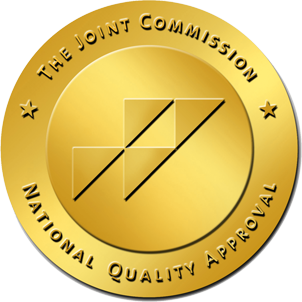
Recovery from drug and alcohol addiction is a lifelong journey. For many, completing detox and treatment is a huge milestone—but it’s not the end of the story. Staying sober means learning how to live life without turning back to substances when challenges arise. One of the most important skills you’ll develop in recovery is recognizing and managing your addiction triggers.
At 10 Acre Ranch, a leading drug and alcohol treatment center in Southern California, we know that understanding your triggers can mean the difference between long-term sobriety and relapse. Let’s explore what triggers are, how to recognize them, and strategies to manage them so you can protect your recovery.
What Are Addiction Triggers?
In addiction recovery, triggers are situations, feelings, people, places, or even certain sensory experiences (like smells or songs) that cause cravings or thoughts about using drugs or alcohol.
These triggers can feel like they come out of nowhere, but in reality, they are the brain’s conditioned responses to certain cues. Over time, your brain associates certain things with substance use. For example, if you used to drink alcohol every Friday after work with a certain group of friends, simply seeing them or walking into that same bar can trigger a strong urge to drink again.
Triggers fall into two main categories:
- External triggers – People, places, objects, events, or situations linked to past substance use.
- Internal triggers – Emotional or mental states, like stress, loneliness, boredom, or excitement, that spark the desire to use.
Why Identifying Triggers Is So Important
If you don’t know what your triggers are, you may walk straight into high-risk situations without realizing it. Triggers can sneak up on you, and once cravings are intense, it can be much harder to resist relapse.
By identifying your triggers early in recovery, you give yourself the power to:
- Avoid or limit exposure to high-risk situations
- Create healthy coping strategies for unavoidable triggers
- Reduce the strength of cravings over time
- Build a strong relapse prevention plan
At 10 Acre Ranch, our therapists help clients map out personal triggers as part of their individualized treatment plan. Recognizing them is the first step in building resilience.
Common Addiction Triggers
While everyone’s triggers are unique, some are very common in recovery. Being aware of these can help you spot patterns in your own life.
1. People
Certain people from your past may be closely tied to your substance use—friends you used to party with, dealers, or even family members who enable destructive behaviors. Sometimes, just seeing these individuals can spark cravings.
2. Places
Bars, clubs, old hangouts, or even neighborhoods where you used to use can be powerful external triggers. The environment itself can bring back strong memories.

3. Special Occasions
Holidays, weddings, birthdays, or even sports events often involve alcohol or drug use in certain social circles. The celebratory energy can increase temptation.
4. Stress
One of the most common internal triggers, stress can drive the urge to escape or numb emotions with substances.
5. Boredom
In early recovery, boredom can feel uncomfortable—especially if much of your free time was previously spent using substances.
6. Loneliness
Isolation can trigger cravings, especially if you previously used substances to feel more connected or socially comfortable.
7. Certain Emotions
Even positive emotions like excitement can be triggering if you associate them with partying or celebrating with substances.
8. Sensory Reminders
Smells, songs, or even certain times of day can unconsciously spark cravings.
Need Help? Let’s Talk!
Your path to recovery begins with a simple conversation.
Call now to speak confidentially with an admission counselor.

How to Recognize Your Personal Triggers
Understanding your personal triggers takes honest self-reflection. Here are some ways to uncover them:
- Keep a Recovery Journal – Write down situations when you feel cravings. Note what was happening, who you were with, how you felt, and what thoughts came up.
- Review Past Relapses – Think about previous slips and identify what led up to them. Often, patterns emerge.
- Work with a Therapist – At 10 Acre Ranch, our counselors guide clients through exercises to uncover both obvious and hidden triggers.
- Ask Trusted Friends or Family – Sometimes others notice patterns you might miss.
The goal is to make your triggers so clear that you can anticipate them and respond in a healthy way—before cravings get too strong.
Strategies to Manage Addiction Triggers
Once you’ve identified your triggers, you can develop strategies to either avoid them or cope with them effectively. Here are proven methods we teach at 10 Acre Ranch.
1. Avoid High-Risk People and Places
Especially in early recovery, it’s wise to keep your distance from old using friends or environments. This may mean skipping certain events or finding new social circles.
Pro Tip: If you must attend an event with potential triggers, bring a sober friend for support.
2. Build a Healthy Support System
Surround yourself with people who support your sobriety—friends, family, recovery peers, or sponsors. Having someone to call when cravings hit can make all the difference.
3. Practice Stress-Management Techniques
Since stress is a major trigger, learning relaxation techniques is key. Deep breathing, meditation, yoga, and regular exercise can help regulate your mood and reduce anxiety.
4. Create a Structured Daily Routine
Structure keeps you focused and helps prevent boredom. Fill your day with meaningful activities, hobbies, work, and recovery meetings.
5. Use Grounding Techniques
When you feel triggered, grounding techniques like the “5-4-3-2-1” method (naming things you see, feel, hear, smell, and taste) can pull you back into the present moment and reduce cravings.
6. Change Your Perspective
Cognitive-behavioral therapy (CBT), which we offer at 10 Acre Ranch, helps you challenge and reframe thoughts that lead to cravings.
Example: Instead of “I can’t handle this stress without a drink,” you might learn to think, “I’ve handled stress before in healthy ways, and I can do it again.”
7. Develop New Coping Skills
Replace old habits with healthier ones. If loneliness is a trigger, join a group or take a class. If boredom strikes, explore creative outlets like painting, writing, or learning an instrument.
8. Make a Relapse Prevention Plan
Work with your therapist to map out:
- Your personal triggers
- Warning signs you’re slipping
- Healthy coping strategies
- Who to call for help
- Steps to take if you relapse
Having this plan ready makes it easier to respond quickly and effectively when triggers arise.
The Role of Treatment in Managing Triggers
It’s important to remember that you don’t have to figure all of this out alone. A professional treatment program like 10 Acre Ranch can help you:
- Identify triggers through guided therapy and self-discovery
- Learn coping skills through evidence-based treatments like CBT, DBT, and mindfulness training
- Practice real-life scenarios in a safe, supportive environment
- Receive accountability and encouragement from peers and professionals
- Address underlying mental health issues that may intensify triggers
Our compassionate team understands that recovery isn’t just about stopping substance use—it’s about creating a new way of life that feels rewarding and sustainable.

Long-Term Recovery: Reducing the Power of Triggers
The good news is that triggers often lose their power over time. Through repeated healthy responses, your brain learns new associations, and cravings become less intense.
Here’s how you can support long-term progress:
- Stay connected to your recovery community – Attend meetings, therapy, or aftercare programs regularly.
- Keep practicing coping skills – The more you use them, the more natural they become.
- Continue personal growth – Set new goals, try new activities, and keep building a meaningful life.
Stay vigilant – Even years into recovery, unexpected triggers can arise. Be prepared.
How 10 Acre Ranch Can Help
Located in the beautiful surroundings of Southern California, 10 Acre Ranch offers a safe, pet-friendly environment where you can heal from addiction and learn the skills to protect your recovery. We offer:
- Medical detox for a safe start to sobriety
- Residential treatment with individualized therapy
- Dual diagnosis care for co-occurring mental health conditions
- Relapse prevention planning to prepare you for life after treatment
- Aftercare support to keep you connected and accountable
We believe that with the right tools and support, anyone can learn to recognize and manage their triggers, paving the way for a fulfilling, sober life.
Final Thoughts
Recognizing and managing addiction triggers is one of the most important parts of recovery. By understanding what sets off cravings and developing healthy ways to respond, you give yourself the best chance at long-term sobriety.
Remember: Triggers don’t mean you’re failing—they’re a normal part of the recovery process. The key is to face them with awareness, preparation, and support.
If you’re ready to learn these skills in a safe and supportive environment, 10 Acre Ranch is here to help you every step of the way.
Call 10 Acre Ranch today to take the first step toward a life free from the control of addiction. You don’t have to face your triggers alone—let us help you build the tools for lasting recovery.






